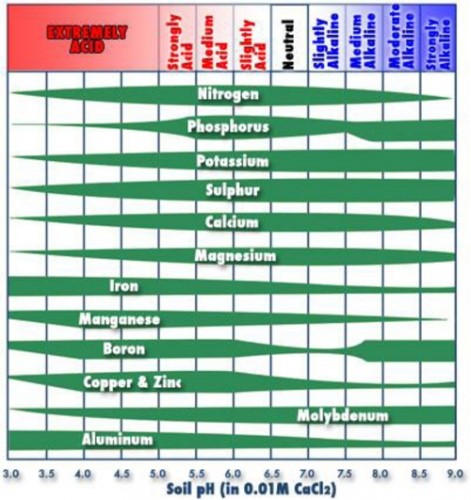Soil health tests are a big conversation topic these days, but there’s a lot of conflicting information out there. Presented by Stacy Zuber, Ph.D., State Soil Health Specialist with USDA Natural Resources Conservation Service, this webinar discusses how soil health tests differ from measuring soil fertility, sampling and handling procedures and how to interpret your results.
Presenter: Stacy Zuber, Ph.D., State Soil Health Specialist with the... Read More →
ILSOYADVISOR POST
Managing Micronutrients in Soybeans
June 26, 2019
There are 18 essential nutrients in plants: Nitrogen, phosphorus and potassium are the most likely to be added as fertilizer. Water, carbon and oxygen come from air and water. Calcium, magnesium and sulfur are needed in large amounts as well, and in Illinois we generally take what we get from nature. Sulfur now commonly needs to be added along with the big 3. We add calcium and magnesium when we lime, although in Southern Illinois we generally come up short on magnesium in our liming materials. And micronutrients are also essential, but needed in smaller amounts. Boron, iron, manganese, zinc, copper, chlorine, molybdenum and cobalt are generally considered essential micronutrients. Some would add silicon to that list as well.
 The first step in getting your micronutrient levels in order is to get your soil pH right. Soil pH affects the availability of all plant nutrients, but in order to keep micronutrients available, pH needs to be in the sweet spot between 6.0 and 7.0. The chart to the right is from Michigan State University.
The first step in getting your micronutrient levels in order is to get your soil pH right. Soil pH affects the availability of all plant nutrients, but in order to keep micronutrients available, pH needs to be in the sweet spot between 6.0 and 7.0. The chart to the right is from Michigan State University.Once soil pH is corrected, the next step is to soil test for micronutrients. It is surprising how many people still say that testing is not needed for micronutrients. In the modern world, it costs very little to get the extra data. Another rub is, micronutrient testing is thought to be unreliable in determining a plant or yield response to soil test levels. My response is that you need to start somewhere.
If you still want more data, I have found tissue sampling to be useful in determining whether micronutrient deficiencies exist. Last year, I had some soils with relatively low manganese test levels, but by tissue testing, I found that manganese wasn’t an issue. Tissue sampling in soybeans is done at R-1 or R-3 growth stages. North Central States has a publication on Managing Micro-Nutrients for Soybean Production in the North Central Region.
A few cautions are in order concerning tissue testing:
- Time of day sampled can make a difference.
- Sometimes dust on the plant can skew results.
- Don’t test when the crop is stressed. Of course, it will show deficiencies, but the plants are unlikely to respond to treatment.
After collecting your data and determining you have a problem, what do you do about it? First off keep in mind that micronutrients can be toxic if over applied. Soybeans are especially sensitive to boron. Copper can be toxic at as little as 10 ppm. I work on some soils where copper is over 100 ppm caused by industrial pollution, which is very difficult to manage.
Many researchers report that a blanket application of micronutrients without some indication they are needed isn’t economically wise. If treatments are needed during the growing season, foliar applications can be effective in treating symptoms. I have also found that soil applied micronutrients can be effective in treating low soil test levels. Sometimes soil test levels remain at desired levels for several years after treatment. I suspect we are stimulating microbes who will consume and then recycle micronutrients back into the soil.
This leads to the question about biological treatments for micronutrients. One of the reasons that pH between 6 and 7 is so important is that it is ideal for microbial activity. But the big question is, can I improve micronutrient availability by using one of the new biological seed treatments? I think biological treatments can work, but it seems to be on a farm by farm and year by year basis, so if you want to try biologicals, you should also be prepared to do some strip trials to see what works on your farm.
There are also some farmers using silicon as a fertilizer. Silicon is one of the most abundant elements. The building framework of our soils is alumno-silicate clays. There should be enough available in most soils, however some trials have shown a good response to fertilizer silicon. The downside is that we have little idea on response or economics and currently there is no soil test for available silica. To learn more about this element click Silicon Fertilizer Gaining Ground.
In summary, micronutrient deficiency isn’t a common problem in soybean production, especially when pH is maintained between 6 and 7. Soil and tissue tests can be useful in identifying micronutrient issues, and microbial treatments may be useful as well. Finally, keep your eye on silicon as an emerging fertilizer.





Comments
Add new comment